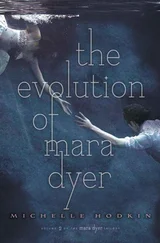We arrived at Lydia’s home. She parallel-parked in front of the door to her building on the side of the street, unbuckled my seat belt, and helped me out. The street was lined with trees whose winter-naked fingers clawed at the gray sky. The trees were planted in mounds of mulch and enclosed by tiny white fences, each one set in the middle of a rectangle of dead grass blocked out by paved walkways; and each walkway led to an iron gate and up four steps to a door in a long contiguous slab of four-story brick buildings. Lydia bore me across the walk, through the gate, up the stairs to the door of her building, through that door and into a hallway. Her door was 1A: bottom floor, first one on the left. Supporting my weight with one arm while using the other to turn the key in the lock and push open the door in the same motion, she said, “We’re home sweet home, Bruno,” and, like a surreal subversion of newlywed man and wife, woman carried ape across the threshold of 5120 South Ellis Avenue, Apartment 1A.
I should describe this space for you with utmost and delicate accuracy. Therefore, I now present you with a map of our apartment, which I spent all last night fastidiously drawing from memory. You may find it useful to consult as I take you on the grand tour.
5120 South Ellis Avenue, Apt. 1A, Chicago, IL 60615:
Residence of Lydia and Bruno

Lydia lived in a small but comfortable ground-level two-bedroom, two-bathroom apartment in upper Hyde Park on South Ellis Avenue, between Fifty-first and Fifty-second streets.
She set me down on the tiled floor of the vestibule (1), a small dimly lit mudroom that provided a liminal space for psychological transition between the front door and the rest of the apartment. She kneeled and slid her feet out of her slushy winter boots and left them to dry on a mat by the front door, joining several other pairs of empty footwear lining the wall. She struggled out of her black woolen coat and hung it and her scarf and hat on pegs protruding from the back of the open door to the entryway closet (2). Her feet now shod in thick furry red stockings — had I ever seen Lydia barefoot? — had I ever before seen her in her stocking feet? — she took me by the hand and walked me into the combined living room/dining area (3), the largest space in the apartment. She clicked on a light, and a membranous corrugated paper globe hanging from the middle of the ceiling became illuminated from within, blanketing the room in soft gauzy light. The floors were of hard glossy wood, partially covered by a large circular area rug (4) that lay in the middle of the room directly beneath the paper lighting fixture; the rug, frayed and threadbare in its most heavily trafficked areas, was predominately burgundy and featured an intricate pattern of vines and flowers radially kaleidoscoping outward from the center, its circumference fringed with knotted tassels of string. The north wall, the longest in the room, is of bare brick, with a fireplace (5) embedded in the middle of it; the floor surrounding the fireplace is of inflammable gray-green granite tile, and it is protected by a glass-and-metal grate. The other walls are sheetrock, textured and painted regulation eggshell-white, and there are two vertical picture windows in the east wall that look out onto South Ellis Avenue, which, if privacy is desired, may be shrouded with red drapes that approximately match the rug. The furniture is homey but somewhat jumbled and mismatched. The smallness of the apartment has required Lydia to cram most of her furniture into this main living area, resulting in mildly unnerving crosscurrents of spatial flow. The tan leather couch pushed against the east wall beneath the street-facing windows (6) matches the nearby armchair and ottoman (7), the two circular side tables beside the couch and armchair (8, 9) are of pine, and the ovular cherrywood coffee table (10) matches the ovular cherrywood dining table and chairs (11) in the far corner of the room, but these three different sets of furniture do not visually harmonize with each other. A floor lamp stands behind the couch in the southeast corner of the living room (12). A long and fully stocked bookcase (13) lines the south wall. On a small console a TV (14) perches awkwardly in the middle of the room, and a personal computer (15), along with a desk lamp and a tumultuous litter of papers, pens, and pencils, rests atop an architect’s drafting table (16). Various objets d’art personalize the room: a framed print of Marc Chagall’s I and the Village hangs on the north wall near the dining table, a dark and atmospheric Edward Weston nude above the worktable, and on the south wall above the bookshelf hangs a large rectangular painting depicting what looks like a writhing nest of eels slithering out of the green half of the picture and into the yellow; candles and primitive wooden effigies march across the top surface of the bookcase and across the fireplace mantel. Moving to the back of the room, we observe more closely the ovular cherrywood dining table and the four matching chairs. Beside the table is a waist-high oblong block of furniture (17) with three deep shelves locked behind glass doors; the bottom two shelves contain a miscellany of various knickknacks and oversize books, and the top shelf holds Lydia’s collection of tapes and CDs, its constituency reflecting her eclectic and generally excellent musical taste, combining elements of high culture (Dvo rák’s Cello Concerto in B minor), coffee-shop cool (John Coltrane’s A Love Supreme ) and an American girlhood that blossomed in the early 1980s (Elvis Costello, Blondie, Prince, Talking Heads). On top of this is a stereo (18), with an LCD display of digital numbers, flashing, in a verdant undersea glow, an impossibly incorrect time. To the left of the stereo rests a shallow burnished mother-of-pearl dish (19) into which Lydia, when returning home from work, empties the contents of her purse or coat pockets: keys, loose change accrued over the course of the day’s small financial transactions, etc. — joining pens, paper clips, and other coins already in the dish.
To the right of the stereo, angled in such a way as to be optimally viewed from the position of one seated at the work desk beside it, is an eight-by-ten-inch photograph (20) in an unadorned black wooden frame of the readymade, commercially available sort with metal clips in the back and a triangular stand that folds out to prop it up for display at a steep, slightly obtuse angle. Inside the frame, behind the glass, a group of people are gathered together in what appears to be a hermetically sealed vacuum chamber, all staring straight ahead with smiles slathered like butter across the white bread of their faces, the very young and the very old sitting in front and everyone else standing behind them. In the bottom center of the photograph sit two elderly people: a man with a gawkily grinning pink bald head bobbing atop a sinewy neck that pokes out of the collar of his corduroy suit like a baby bird breaking out of its eggshell, his teeth like the yellowing white keys of an old piano and his murky gray-green eyes floating like jellyfish in the thick aquariums of his eyeglasses; his skinny arm is wrapped around the woman sitting beside him dressed in a fuzzy white turtleneck sweater and a red vest, whose skin is rusty with liver spots and whose smile does not reveal her teeth, with a brushed-steel bouffant, pearl earrings, and a matching necklace, whose eyes are smoke-colored and haloed with cataracts, who was clearly a beautiful woman in her youth, and whose dense rosy perfume you can almost smell through the photograph, as if, on the day it was taken, her perfume had been powerful enough to waft through the lens of the camera, seep into the celluloid of the film, and later transfer from the negatives onto the matte-finish color print to finally sublimate through the glass of the frame and into the nose of the photograph’s viewer. Surrounding these two old people in the center of the image are six adults and five children, the adults standing beside and behind them and the children seated in front, three girls in blue dresses with faces flexing authentic smiles and two boys in matching blue jackets sullenly faking theirs. Of the six adults, four are men and two are women, one of whom is Lydia, though her hair is different and she looks younger. Most of them have blond hair and crooked teeth. These are Lydia’s siblings, of whom she is the youngest. This is her family. They are all dressed in cheap formal wear. A gold Wal-Mart logo peeks out from behind the frame in the bottom left corner of the photograph.
Читать дальше













